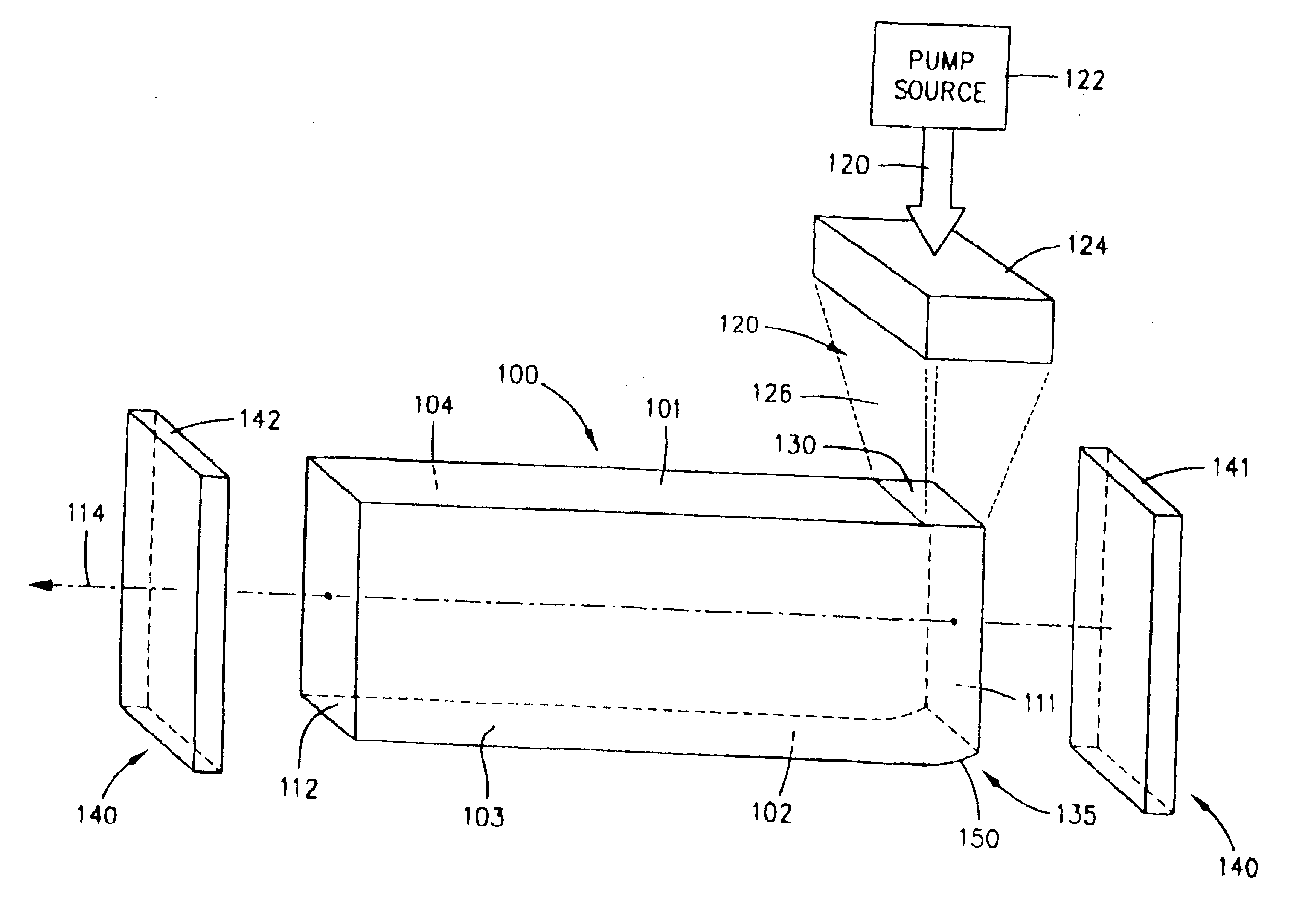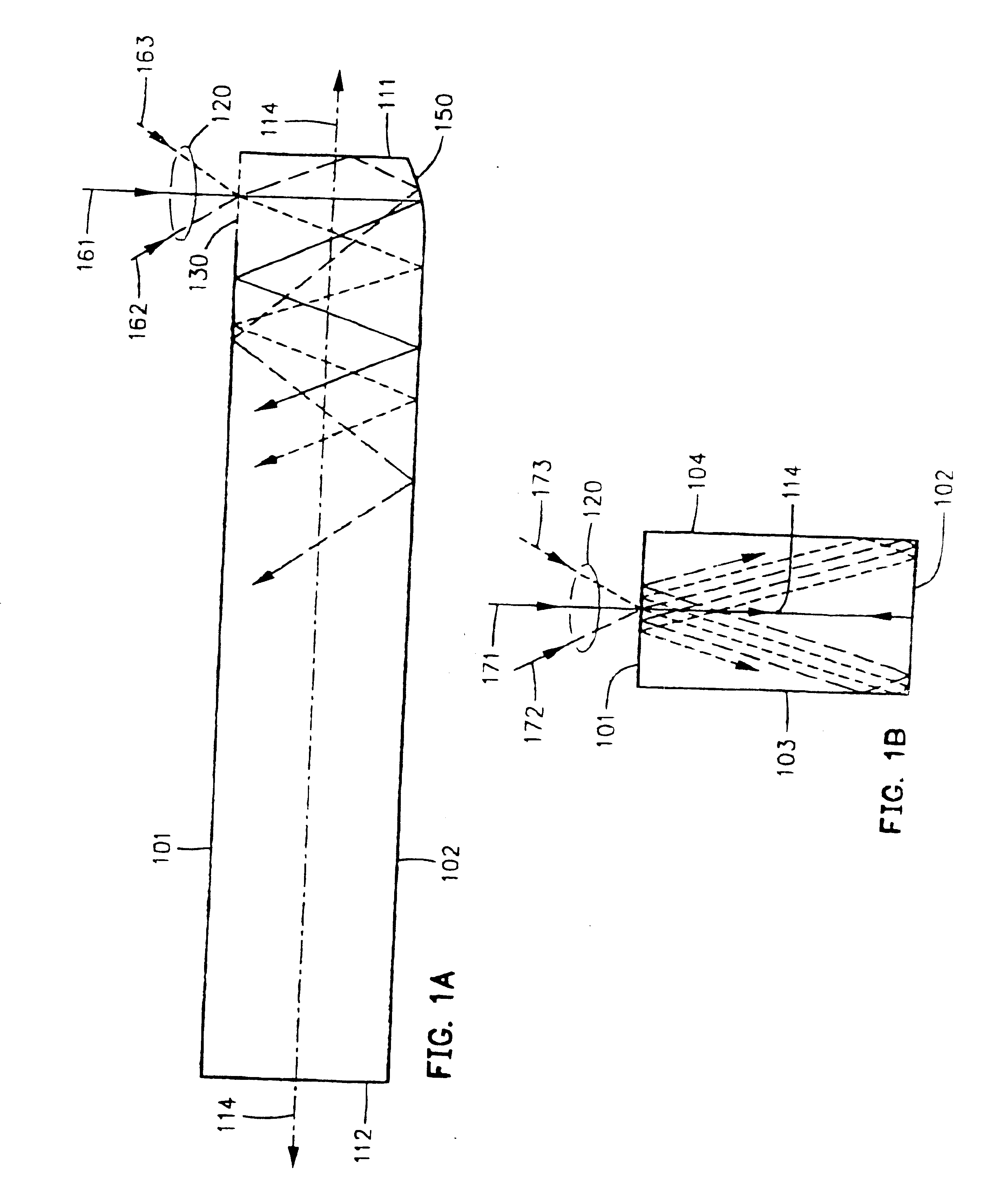Laser with gain medium configured to provide an integrated optical pump cavity
a gain medium and optical pump technology, applied in the direction of laser details, active medium shape and construction, optical resonator shape and construction, etc., can solve the problems of difficult laser operation, inability to achieve efficient optical pumping of side-pumped laser medium, and inability to achieve high-power laser operation, etc., to achieve efficient extraction of energy from optical pump radiation, low loss, and high conversion efficiency
- Summary
- Abstract
- Description
- Claims
- Application Information
AI Technical Summary
Benefits of technology
Problems solved by technology
Method used
Image
Examples
Embodiment Construction
[0040] This invention is described in the following description with reference to the Figures, in which like numbers represent the same or similar elements.
[0041] As used herein, the angle of incidence of a light ray with a surface is defined with respect to the normal (i.e. perpendicular) to the surface. Light rays incident upon a reflective surface are reflected at an angle that is a function of the angle of incidence. Some surfaces are designed with materials or optical coatings over a range of angles of incidence. However, even if the surface is not designed to be reflective, under certain circumstances an interface between two materials will be reflective to light rays having large angles of incidence, an effect caused by total internal reflection ("TIR"). Specifically, TIR causes a light ray propagating through a material having a high index of refraction to be reflected from an interface with another medium that has a lower index of refraction, if the angle of incidence is la...
PUM
 Login to View More
Login to View More Abstract
Description
Claims
Application Information
 Login to View More
Login to View More - R&D
- Intellectual Property
- Life Sciences
- Materials
- Tech Scout
- Unparalleled Data Quality
- Higher Quality Content
- 60% Fewer Hallucinations
Browse by: Latest US Patents, China's latest patents, Technical Efficacy Thesaurus, Application Domain, Technology Topic, Popular Technical Reports.
© 2025 PatSnap. All rights reserved.Legal|Privacy policy|Modern Slavery Act Transparency Statement|Sitemap|About US| Contact US: help@patsnap.com



